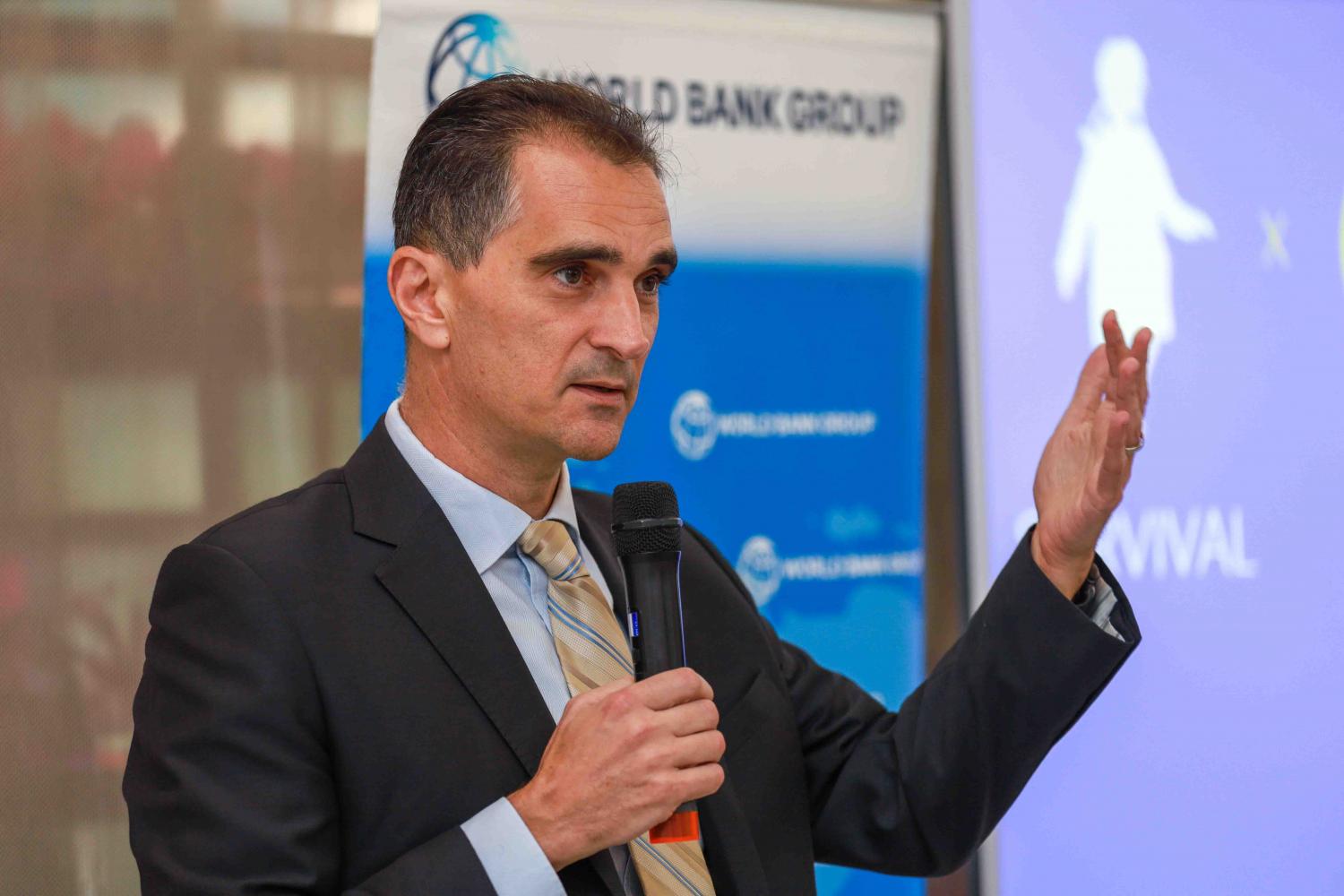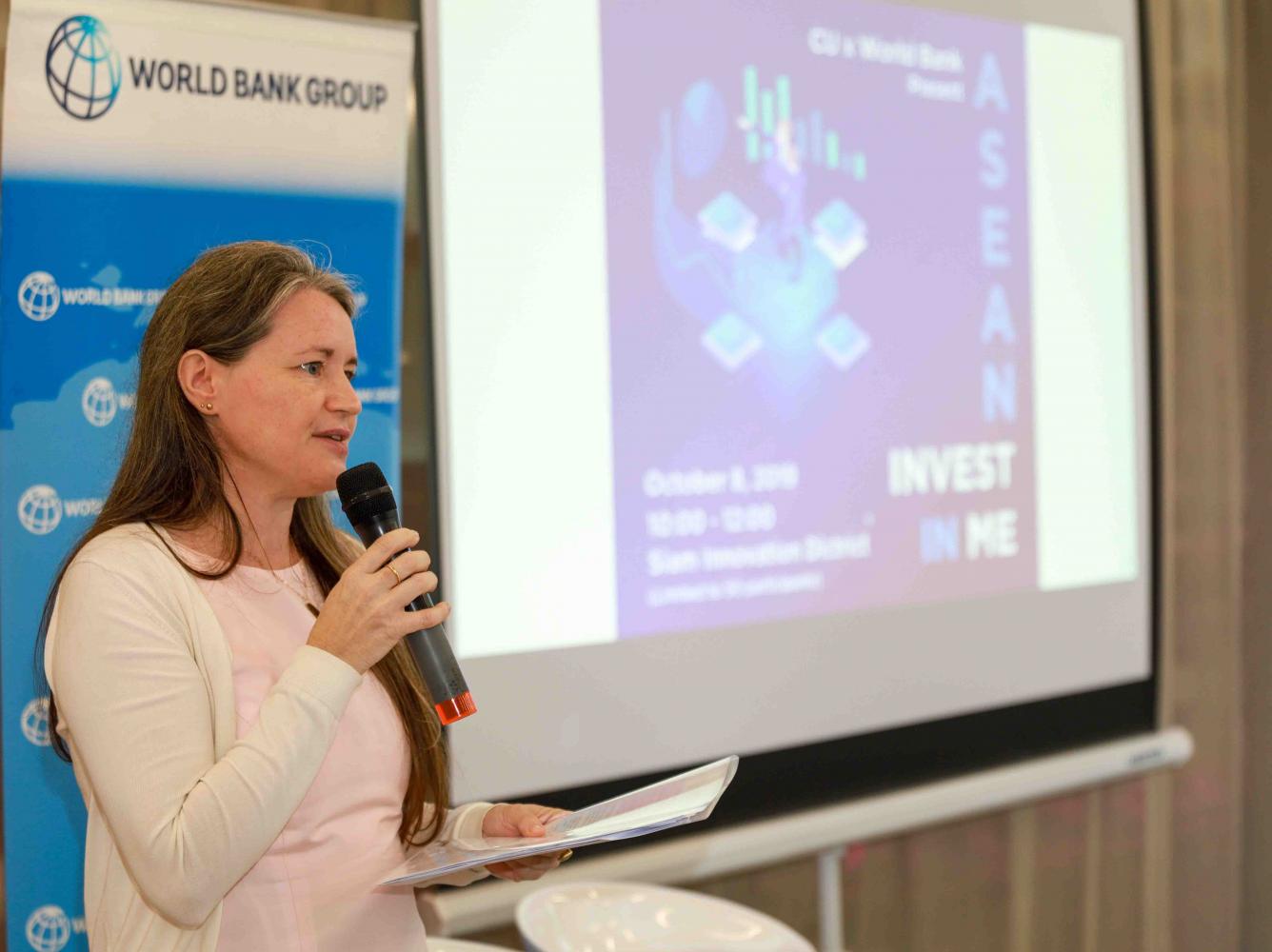
In an uncertain world where people are growing more anxious about the economy and their own prospects, human development has become a priority. Sustainability and inclusion have become the mantra for those tasked with ensuring that no one gets left behind amid the technology-driven changes sweeping the globe.
The drive to build a better world, agreed on in 2015 by all United Nations member states, is summed up in the Sustainable Development Goals. It sets a deadline of 2030 for achieving concrete improvement in 17 fundamental areas such as reducing poverty, promoting better health and education and a clean environment.
But perhaps the most urgent aspect of development is in human capital, which is defined as "the knowledge, skills and health that people accumulate throughout their lives". The World Bank emphasises that investment in human capital development is the key to the sustainable future we all need.
"Prioritising human capital development means putting people at the centre of investments, policies and programmes," said Birgit Hansl, the World Bank country director for Thailand.
"By working toward these goals, Asean countries can directly address gaps and provide a more sustainable, equitable and prosperous future for all its people."
Dr Gabriel Demombynes, the bank's programme leader for human development, emphasised that investing in the physical, cognitive and emotional development of children is critical for their future productivity and that of society. Doing so will enable children to reach their full potential, thereby fortifying their ability to contribute to society.
Although Asean countries have succeeded in lowering poverty significantly, there are still some areas that need to be addressed. That includes investing more in human capital, he said.
The Human Capital Index (HCI) in Asean averages 0.59, just above the worldwide average of 0.57 out of 1.0. The index, launched by the World Bank in 2018, quantifies the contribution of health and education to the productivity of the next generation of workers. It can be used to track progress in the countries where data is available.
The HCI is made up of five indicators: a child's ability to survive to age five, expected years of schooling, harmonised test scores as a measure of quality of learning, adult survival rate (the proportion of 15-year-olds who will survive to age 60), and the proportion of children who are not stunted.
The index is seen as a way to nudge governments to urgently prepare the younger generation to embrace the challenges of the 21st century economy, stressing that they need to invest more in people through proper nutrition, quality healthcare, education, jobs and skills.

Thailand's universal health coverage programme has led to significant improvements in nutrition and healthcare, says Dr Gabriel Demombynes, World Bank programme leader for Human Development. SUPPLIED
HEALTH & EDUCATION
In Asean, health is the key area that needs to be addressed, said Dr Demombynes. A child born in Asean today will "only achieve 59% of their potential productivity when they grow up given limitations regarding health and education in their country", he said.
While survival to age 5 has improved to 98% in Asean, an estimated 5 million children suffer from wasting and one in four children under age five are stunted in growth due to undernutrition, he noted. Stunting heightens the risk of cognitive and physical limitations.
As well, 15% of 15-year-olds will not live until age 60, due mainly to injuries and non-communicative diseases such as diabetes. Lower productivity in adulthood among children born today will limit economic growth and various other opportunities for Asean.
While Singapore, Thailand, and Malaysia are doing well in terms of nutrition, malnutrition is very high among poorer Asean neighbours. In Vietnam, for example, stunting is seen in more than 40% of the poorest population. Stunting rates are also high in Cambodia and Laos.
"It is important for all countries to take the Asean Leaders' Declaration on Ending all Forms of Malnutrition to heart, said Karin Hulshof, regional director of the United Nations Children's Fund (Unicef).
"The region is now facing a double burden of malnutrition. It is home to 63.7 million undernourished people and has the fastest growing prevalence of childhood obesity in the world; both will negatively impact human capital and economic development," she said.
Dr Demombynes said that children who arrive at school well-nourished and ready to learn can be expected to attain real learning in the classroom and are able to enter the job market as healthy, skilled and productive adults. But the brain of a malnourished child will not form a full set of neural connections, meaning he or she will struggle to learn at school, resulting in higher dropout rates.
Asean also needs more investment to bring about higher-quality education, he continued. The rate of school attainment is high across Asean countries, but what matters is not the time a child spends sitting in school, but how much the child learns during their time in school. The HCI has quantified this to show that Asean, except for Singapore, has a lot of homework to do (see graphic).
According to the HCI, while Asean children on average complete 11.8 years of school, they only receive 8.6 years' worth of learning. Thai children on average complete 12.4 years of school but that only translates into 8.64 years' worth of learning.
On a positive note, only one in 100 children in East Asia is out of school, which is better than in other regions. However, Dr Demombynes cautions that 21 in 100 children lack the basic literacy skills to read beyond the primary school level. But still, East Asia is doing better than the rest.
Thailand scores well in two areas: healthcare and nutrition. The life expectancy of Thais has "risen remarkably" under the universal health coverage (UHC) programme, he said. "The positive change started with full population coverage back in 2002 when UHC was initiated."
Improved nutrition in Thailand is reflected in the low rate of Child stunting, which in recent years has continued to drop. This is a notable success that other countries are emulating, he pointed out.
However, there are two main challenges that the kingdom needs to address: quality of education and the ageing population. Dr Demombynes noted that the gap in performance between students in large cities and villages has actually increased over time. The same worrying pattern is seen in Cambodia and Laos.
RECOMMENDATIONS
The World Bank stresses that going forward, Asean needs to address the issues of inequality as well as the impacts of ongoing digital transformation. Unequal access to basic services has contributed to widening inequality, especially in heath and education. And while disruptive technology may affect certain jobs, digital transformation offers opportunity for human capital development.
Countries can fight malnutrition by improving access to nutritious foods, ensure that adults can continuously improve their skills throughout their lives, improve the quality of education systems, and provide quality health services and financial protection through universal health coverage. This will help bring about a more sustainable future.
Importantly, human development is not limited to the youth population. Today, about 13% of the population is over age 65. In 20 years, the proportion will double. This will have a profound impact on countries in terms of a smaller workforce and reduced savings rates, both of which will depress the economy.
Human capital development should not be limited to the younger population because older people who will constitute most of the population by 2040 cannot be left out, said Prof Worsak Kanok-Nukulchai, executive director of the School of Integrated Innovation at Chulalongkorn University.
As people are now living longer, countries need to invest in the elderly as well. Doing so will allow them to tap into the economic and social potential of their ageing population.
"The government needs to rethink the age of retirement, whether 60 years old is still the right age to retire," he said.
Prof Worsak also encouraged human capital investment especially in disadvantaged groups and early childhood education to develop new skills that are increasingly important.
But another big question remains: how can a country build a young, skilled workforce fast enough to keep the economy going?
While those who are working need to be as productive as possible to support those who are out of jobs or are no longer able to work, the elderly can be encouraged to keep themselves updated and turn themselves into a productive population by re-educating and reinventing themselves, said Prof Worsak.
Policies are needed to encourage the elderly population to re-engage with society in meaningful ways, he added. He recommends that local universities shift their goal from competing with top schools to looking for ways that they can serve other age groups by providing them with the tools they need to reinvent themselves.
"Let them learn. Become a temple by serving the community in the same way a temple does," he said.

Birgit Hansl, World Bank country director for Thailand SUPPLIED

